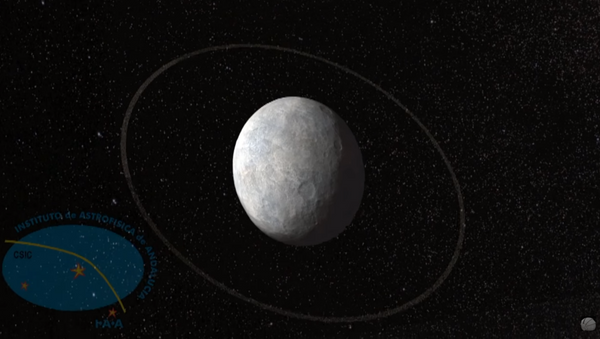Dr. Rene Duffard, co-author of the paper from the Instituto de Astrofísica de Andalucía in Spain, said that scientists have also previously discovered two rings around an object called Chariklo, one of a population of small minor planets called Centaurs that orbit the Sun between Jupiter and Neptune.
However, Haumea's ring is the first time astronomers have witnessed the phenomenon in a minor planet that isn't a Centaur.
“It is possible that the formation of this ring is due to a past collision of two small moons millions of years ago forming a ring around the planet. So we have discovered rings around small planets and giant planets such as Jupiter and Saturn,” Dr. Rene Duffard, said.
According to the scientist similar rings have been previously observed around the planets in our solar system that have water on them, such as Pluto.
“The most important thing is that they have water, like 25% of the mass is water and we know that in the beginning of the solar system these kinds of objects, large with a lot of water, came into the inner part of the solar system where the Earth, Venus and Mars were forming. So maybe all the water that we have today is coming from outside from the outer objects like this one,” Duffard said.
Discussing future research, Duffard said that the scientists will continue to look for more rings and study its material.
“After that we can characterize the body and characterize the kind of materials that are on the surface of the body and how similar are they to those that could have collided with Earth in the past,” the scientist said.
The discovery also provides the team with best analysis yet of Haumea's size and shape, which the researchers describe as “very exotic,” online publication Science Alert reported.



